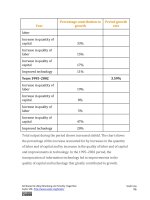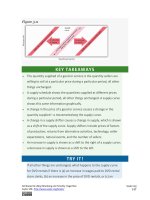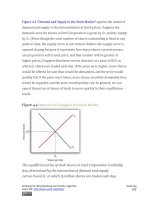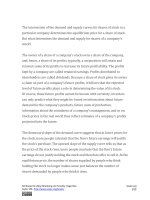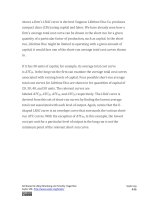Authors libby rittenberg 866
Bạn đang xem bản rút gọn của tài liệu. Xem và tải ngay bản đầy đủ của tài liệu tại đây (492.4 KB, 1 trang )
Administration
Food and Drug
Administration
Regulates food and drug producers; emphasis
on purity, labeling, and product safety
Consumer Product Safety
Commission
Regulates product design and labeling to
reduce risk of consumer injury
Energy and the Environment
Environmental Protection Sets standards for air, water, toxic waste, and
Agency
noise pollution
Department of Energy
Sets national energy policy
Nuclear Regulatory
Commission
Regulates nuclear power plants
Corps of Engineers
Sets policies on construction near rivers,
harbors, and waterways
Labor Markets
Equal Employment
Opportunity Commission
Enforces antidiscrimination laws in the
workplace
National Labor Relations
Board
Enforces rules and regulations governing
contract bargaining and labor relations
between companies and unions
Theories of Regulation
Competing explanations for why there is so much regulation range from
theories that suggest regulation protects the public interest to those that
argue regulation protects the producers or serves the interests of the
regulators. The distinction corresponds to our discussion in the last
chapter of the public interest versus the public choice understanding of
government policy in general.
Attributed to Libby Rittenberg and Timothy Tregarthen
Saylor URL: />
Saylor.org
866
